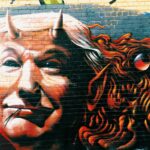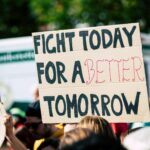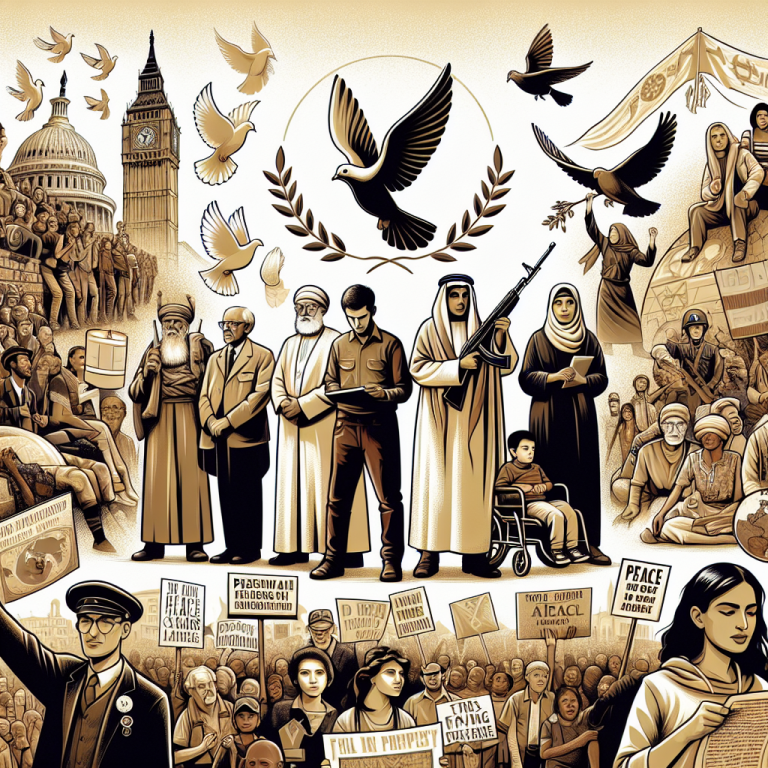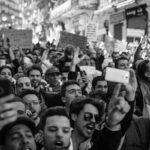The Influence of Mahatma Gandhi’s Nonviolent Resistance in India
The influence of Mahatma Gandhi’s nonviolent resistance in India cannot be overstated. Gandhi, often referred to as the father of the Indian independence movement, played a pivotal role in shaping the course of history through his philosophy of nonviolence. His ideas and methods of civil disobedience continue to inspire movements around the world.
Gandhi’s journey towards nonviolent resistance began during his time in South Africa, where he experienced firsthand the discrimination faced by Indians. It was here that he developed his concept of Satyagraha, which translates to “truth force” or “soul force.” Satyagraha was a philosophy that emphasized the power of truth and nonviolence in the face of injustice.
Upon his return to India, Gandhi applied the principles of Satyagraha to the struggle for Indian independence from British rule. He believed that nonviolent resistance was not only morally superior but also strategically effective. By refusing to cooperate with unjust laws and policies, Gandhi and his followers sought to expose the oppressive nature of British rule and inspire others to join the movement.

One of the most significant examples of Gandhi’s nonviolent resistance was the Salt March of 1930. In an act of defiance against the British salt monopoly, Gandhi led a group of followers on a 240-mile march to the Arabian Sea, where they would collect salt from the beach. This symbolic act of civil disobedience galvanized the Indian population and drew international attention to the cause.
Gandhi’s nonviolent methods were not without opposition. Many criticized his approach as passive and ineffective, arguing that violence was necessary to achieve independence. However, Gandhi remained steadfast in his belief that nonviolence was the only way to bring about lasting change. He famously stated, “An eye for an eye only ends up making the whole world blind.”
The impact of Gandhi’s nonviolent resistance was not limited to India. His ideas and methods inspired numerous civil rights leaders and movements around the world. Martin Luther King Jr., for example, drew heavily from Gandhi’s philosophy in his fight against racial segregation in the United States. King saw nonviolence as a powerful tool for social change, and he successfully applied it to the civil rights movement.
Gandhi’s influence also extended to other parts of the world, such as South Africa, where Nelson Mandela adopted nonviolent resistance as a strategy in the struggle against apartheid. Mandela, like Gandhi, believed in the power of truth and reconciliation to heal a divided society.
In conclusion, Mahatma Gandhi’s nonviolent resistance had a profound influence on the Indian independence movement and continues to inspire movements for social change worldwide. His philosophy of Satyagraha, rooted in the principles of truth and nonviolence, challenged the oppressive systems of his time and paved the way for a more just and equitable society. Gandhi’s legacy serves as a reminder of the power of civil disobedience and the potential for peaceful resistance to bring about lasting change.
The Role of Civil Rights Movements in the United States
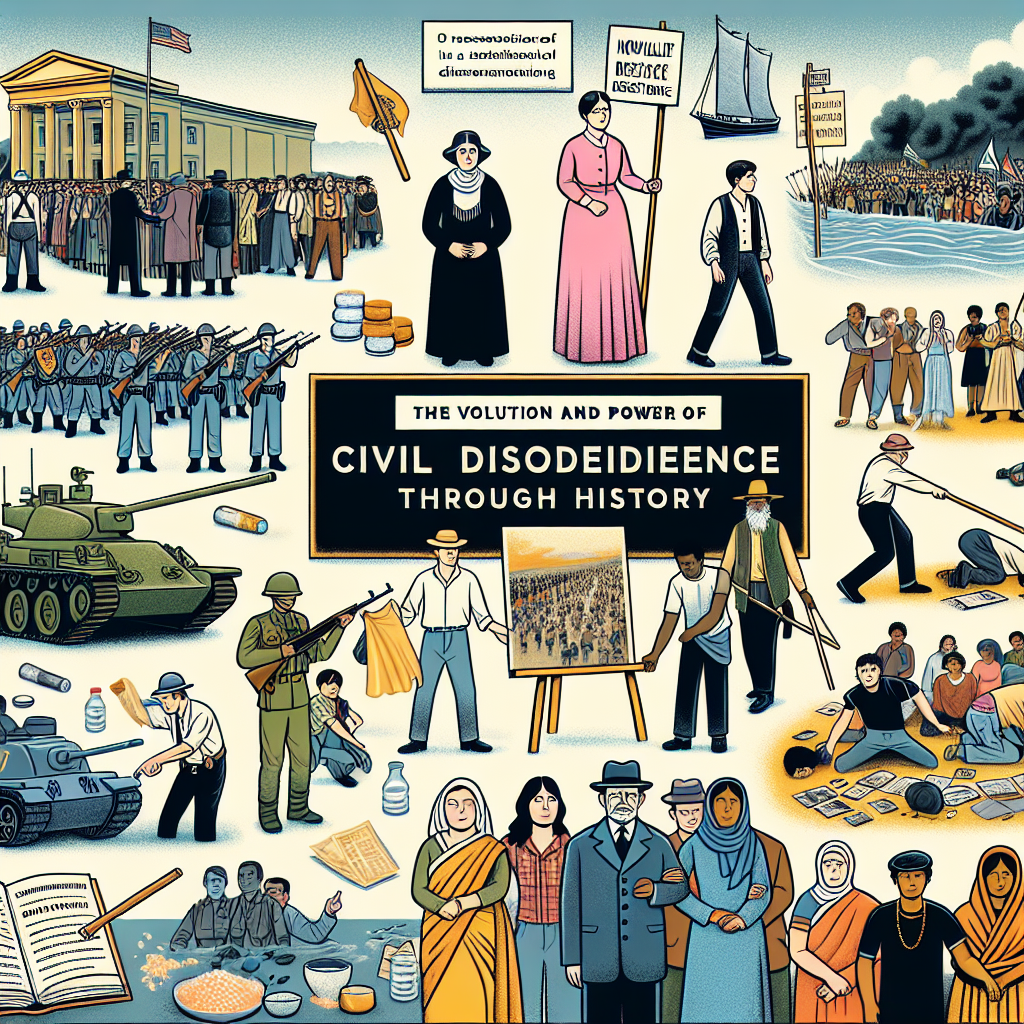
The Role of Civil Rights Movements in the United States

The history of the United States is marked by numerous social and political movements that have sought to challenge and change the status quo. Among these movements, civil rights movements have played a pivotal role in shaping the nation’s history and promoting equality and justice for all. These movements have utilized various strategies and tactics, but one approach that has been particularly influential is civil disobedience.
Civil disobedience is a form of nonviolent resistance that involves intentionally breaking laws or regulations to protest unjust policies or practices. It is a powerful tool that has been used by individuals and groups throughout history to challenge oppressive systems and demand change. The civil rights movements in the United States have effectively employed civil disobedience to bring attention to the injustices faced by marginalized communities and to push for legislative and societal reforms.
One of the most iconic examples of civil disobedience in the civil rights movement was the Montgomery Bus Boycott in 1955. In response to the arrest of Rosa Parks for refusing to give up her seat to a white passenger, African Americans in Montgomery, Alabama, organized a boycott of the city’s bus system. This act of civil disobedience lasted for over a year and ultimately led to a Supreme Court ruling that declared segregation on public buses unconstitutional. The Montgomery Bus Boycott demonstrated the power of nonviolent resistance and inspired similar actions across the country.
Another significant civil rights movement that employed civil disobedience was the sit-in movement of the early 1960s. African American college students, known as the “Greensboro Four,” initiated this movement by sitting at a segregated lunch counter in Greensboro, North Carolina. Their peaceful protest sparked a wave of sit-ins throughout the South, with thousands of students participating in similar demonstrations. These sit-ins challenged the discriminatory policies of businesses and helped to desegregate public spaces.
The civil rights movement also saw the use of civil disobedience in the form of freedom rides. In 1961, interracial groups of activists boarded buses and traveled through the South to challenge segregation on interstate transportation. These freedom riders faced violent opposition from white supremacists, but their bravery and determination brought national attention to the issue and ultimately led to the desegregation of interstate travel.
The power of civil disobedience in the civil rights movement extended beyond individual acts of protest. It also played a crucial role in organizing and mobilizing communities. Civil rights leaders like Martin Luther King Jr. and Ella Baker understood the importance of nonviolent resistance in creating a sense of unity and purpose among activists. Through acts of civil disobedience, they were able to galvanize support and build a broad-based movement for change.
In conclusion, civil disobedience has been a powerful force in the civil rights movements of the United States. From the Montgomery Bus Boycott to the sit-ins and freedom rides, nonviolent resistance has been instrumental in challenging discriminatory practices and advocating for equality. These movements have shown that civil disobedience can be an effective strategy for bringing about social and political change. By breaking unjust laws and peacefully protesting, activists have been able to raise awareness, mobilize communities, and ultimately shape the course of history.
The Impact of Nonviolent Protests in the Fight Against Apartheid in South Africa
The Impact of Nonviolent Protests in the Fight Against Apartheid in South Africa
Nonviolent resistance movements have played a significant role in shaping the course of history. One such movement that stands out is the fight against apartheid in South Africa. The power of civil disobedience was harnessed by activists who believed in the strength of nonviolence as a means to bring about social change. This article explores the impact of nonviolent protests in the fight against apartheid, highlighting key events and individuals who played a crucial role in this historic struggle.
The apartheid system, which enforced racial segregation and discrimination, was deeply entrenched in South African society. However, the resilience and determination of activists like Nelson Mandela, Desmond Tutu, and Albert Luthuli paved the way for a nonviolent resistance movement that would challenge the oppressive regime. These leaders understood that violence would only perpetuate the cycle of hatred and oppression, and instead advocated for peaceful means of protest.
One of the most iconic moments in the fight against apartheid was the Sharpeville Massacre in 1960. Thousands of black South Africans gathered in Sharpeville to protest against the pass laws, which restricted their movement and violated their basic human rights. The police responded with brutal force, killing 69 protesters and injuring hundreds more. This tragic event served as a turning point, galvanizing international support for the anti-apartheid movement and exposing the brutality of the regime.
In response to the Sharpeville Massacre, the African National Congress (ANC) launched a campaign of nonviolent resistance. Led by Nelson Mandela, the ANC called for a nationwide strike, urging South Africans of all races to unite against apartheid. This campaign, known as the Defiance Campaign, aimed to challenge unjust laws through acts of civil disobedience. Thousands of people participated in protests, boycotts, and acts of noncooperation, demonstrating the power of nonviolence in mobilizing the masses.
Another significant event in the fight against apartheid was the Soweto Uprising in 1976. The government’s decision to enforce Afrikaans as the medium of instruction in schools sparked widespread outrage among black students. In response, thousands of students took to the streets, demanding the right to be taught in their native languages. The police responded with violence, killing hundreds of students and igniting a wave of protests across the country.
The Soweto Uprising marked a turning point in the anti-apartheid struggle, as it brought international attention to the plight of black South Africans. The images of police brutality and the resilience of the students resonated with people around the world, leading to increased pressure on the South African government to dismantle the apartheid system.
The impact of nonviolent protests in the fight against apartheid cannot be overstated. These acts of civil disobedience not only exposed the injustices of the regime but also united people from diverse backgrounds in their quest for freedom and equality. The international community, inspired by the nonviolent resistance movement, imposed economic sanctions and diplomatic pressure on South Africa, further isolating the apartheid government.
Ultimately, the power of civil disobedience prevailed, and apartheid was dismantled in the early 1990s. Nelson Mandela, who had spent 27 years in prison for his activism, became the first democratically elected president of South Africa in 1994. His leadership and commitment to nonviolence served as a beacon of hope for oppressed people around the world.
In conclusion, the impact of nonviolent protests in the fight against apartheid in South Africa was profound. The Defiance Campaign and the Soweto Uprising, among other key events, demonstrated the power of nonviolence in mobilizing the masses and exposing the injustices of the apartheid regime. The resilience and determination of activists like Nelson Mandela and Desmond Tutu paved the way for a new era of freedom and equality in South Africa. The fight against apartheid serves as a testament to the power of civil disobedience in bringing about lasting social change.
